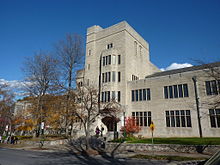Evansville, Indiana – In the matter of Berry Plastics Corp. v. Intertape Polymer Corp., Indiana patent attorneys for Berry Plastics Corporation (“Berry”) invoked the crime-fraud exception to the attorney-client privilege, asking the court to compel Intertape Polymer Corporation (“Intertape”) to produce documents and testimony it had withheld as privileged. Magistrate Judge William G. Hussmann, Jr. of the Southern District of Indiana denied the request.
This Indiana patent lawsuit was filed in January 2010 and seeks a declaratory judgment. Plaintiff Berry of Evansville, Indiana requested a judgment that Patent No. 7,476,416, titled Process for Preparing Adhesive Using Planetary Extruder, was invalid and unenforceable due to inequitable conduct before the U.S. Patent and Trademark Office (“USPTO”) by Intertape, a company located in Bradenton, Florida.
In this current order, Magistrate Judge Hussmann addresses Berry’s request to compel Intertape to produce documents and testimony that had been withheld as subject to attorney-client privilege. Indiana patent lawyers for Berry argued that this was proper because Intertape had engaged in inequitable conduct or defrauded the USPTO.
The Magistrate first emphasized that this ruling pertained only to discovery, as the question of whether Intertape had perpetrated a fraud upon the USPTO was one of the ultimate issues in the litigation. As such, that question of fact would be decided at trial by Chief Judge Richard L. Young.
The general rule in discovery is that a party to litigation is entitled to discover from his adversary “any nonprivileged matter that is relevant to any party’s claim or defense.” An exception to the attorney-client privilege is made when the communication between the attorney and the client is made in furtherance of a crime or fraud. To successfully invoke this exception, Berry must offer evidence demonstrating that:
1) Intertape made a false representation as to a material fact;
2) Intertape made its false representation with intent to deceive;
3) the USPTO justifiably relied upon Intertape’s false representation; and
4) the USPTO suffered an injury as a consequence of its reliance on Intertape’s false representation.
In an attempt to prove that the elements of the crime-fraud exception applied, Berry offered “numerous allegations and … extensive evidence suggesting Intertape engaged in inequitable conduct or defrauded” the USPTO. Intertape responded to each allegation with “numerous defenses and extensive evidence suggesting its dealings with the USPTO were lawful and forthright.”
The Magistrate held for Intertape. Citing Federal Circuit precedent, which governs the application of the crime-fraud exception to privilege in patent cases, the court called the piercing of the attorney-client privilege an “extreme remedy.” The rule in such cases is that, if the court were to find Intertape’s explanation satisfactory, it must leave the privilege intact. After an analysis of the defenses proffered by Intertape, the court found that Intertape’s explanation for each of the allegations of fraud sufficient to avoid a piercing of the privilege.
Practice Tip: Magistrate judges are adjuncts to Article III district judges. They often dispose of pretrial matters such as motions, evidentiary hearings and pretrial conferences. However, their authority, and thus their role, in federal litigation is constrained by constitutional and statutory limits. Because the factual issue of whether Intertape committed fraud against the USPTO was one of the ultimate issues in the litigation, Magistrate Hussman expressly limited his ruling in this opinion to the discovery dispute before him. At trial, Chief Judge Young, in his role as the ultimate finder of fact, may determine that Intertape did, indeed, commit fraud.
Continue reading
 Indiana Intellectual Property Law News
Indiana Intellectual Property Law News





 Trademark Office
Trademark Office